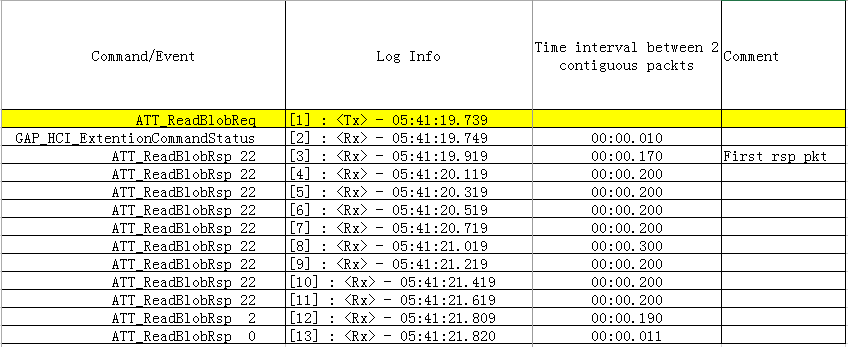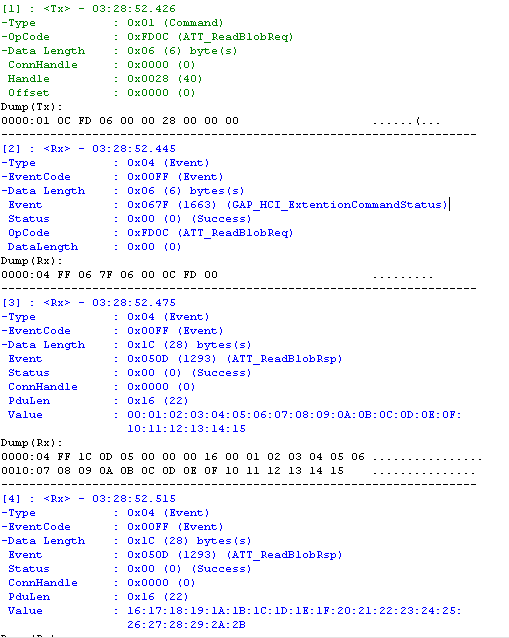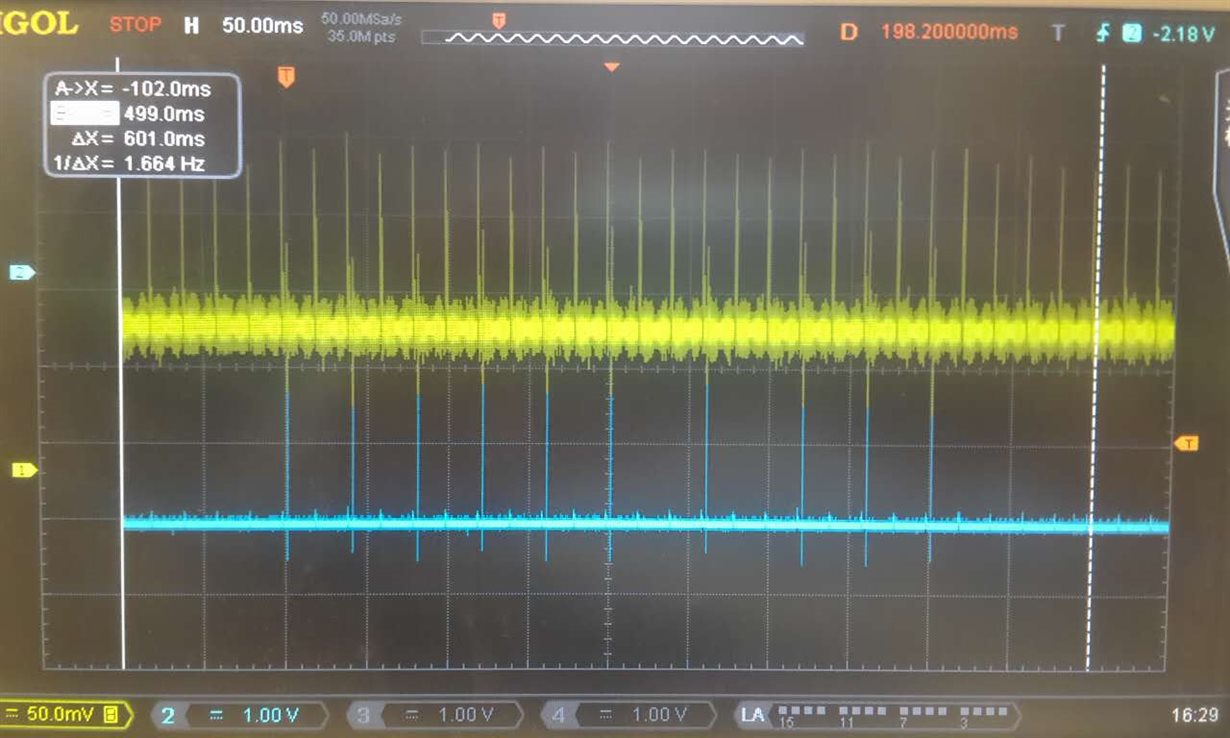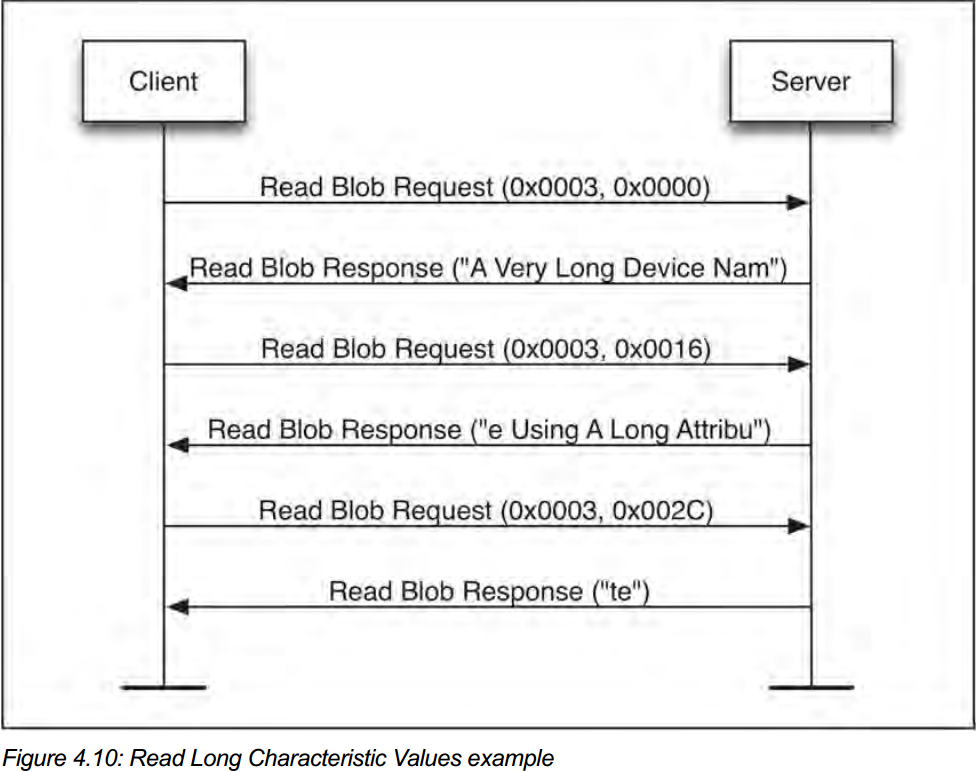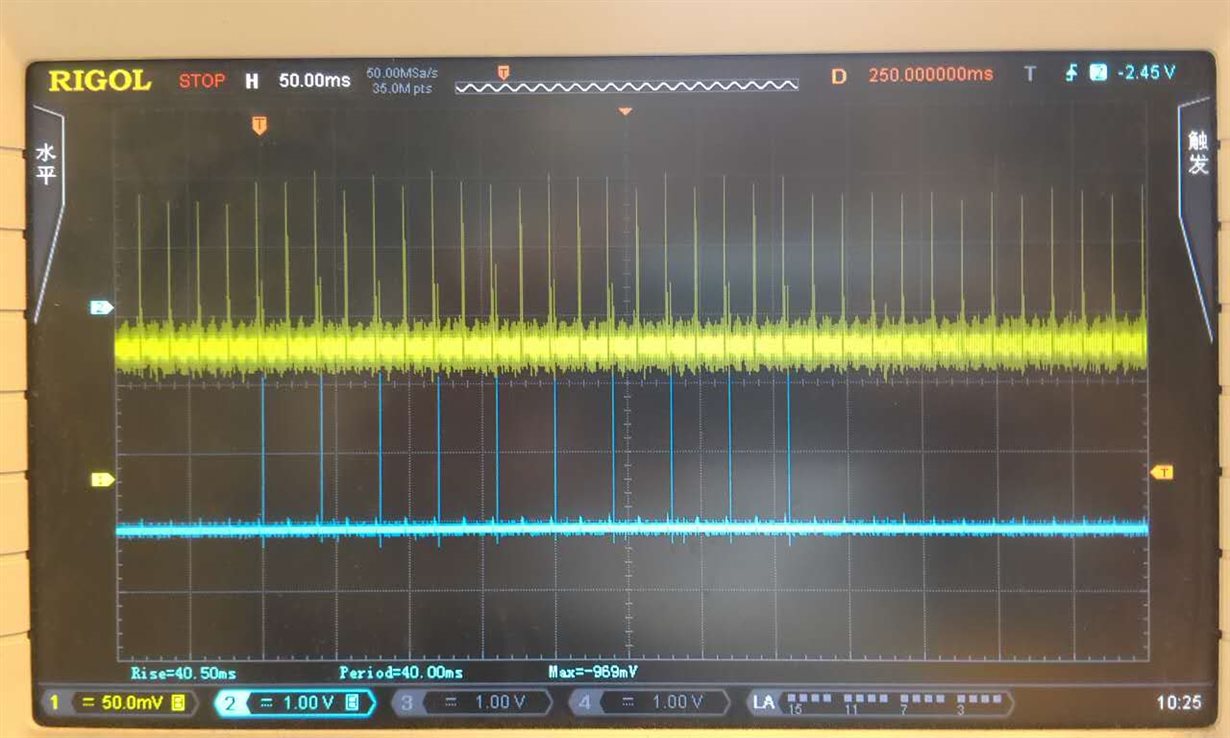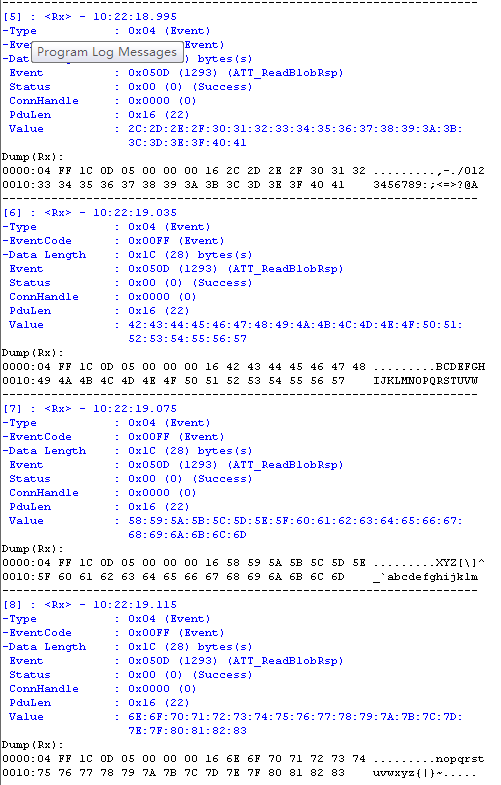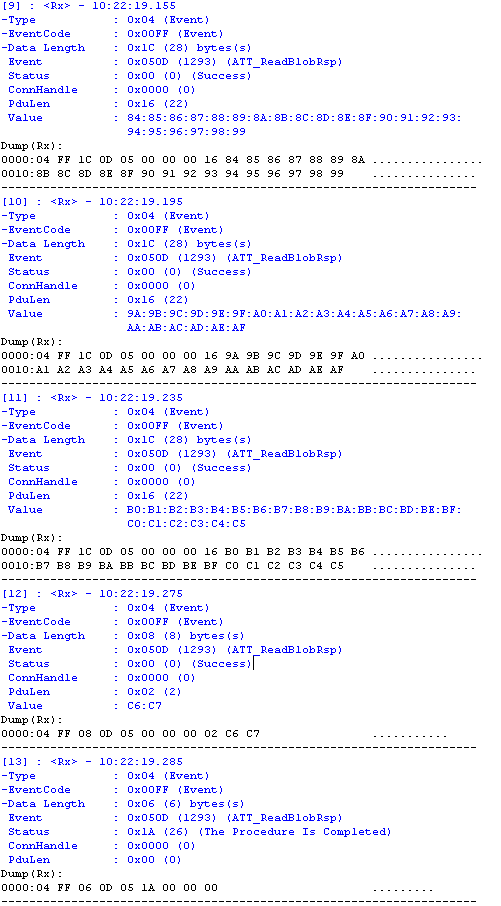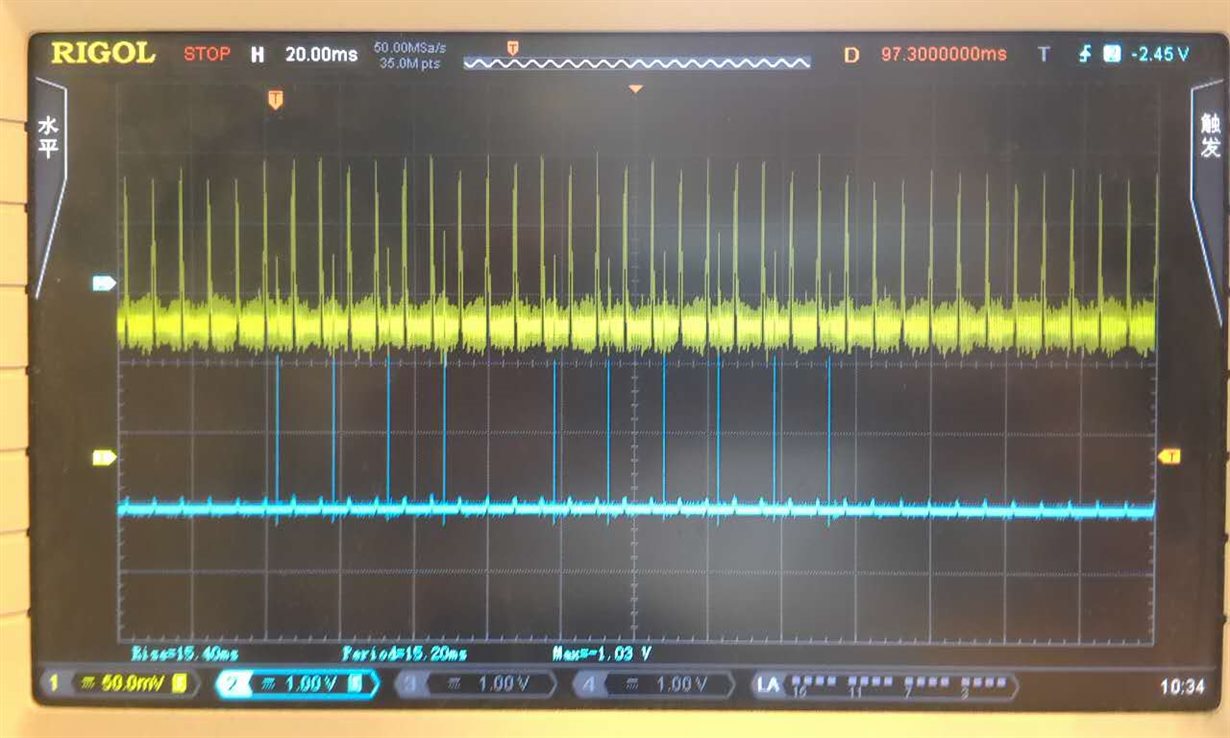Hi,
I've modified the project SimplePeripheral on CC2541, and expanded the character 2 to 200-byte buffer. When i try to read the value of character 2 using 'ATT_ReadBlobReq', it appears that the several ATT_ReadBlobRsp packets do not comeout that closely and immediately. The interval time between two contigious ATT_ReadBlobRsp packets is almost 200 millisecond. So so so so, here is the question, how to decrease the time interval ?
Experiment settings:
1. Connection interval is 1000ms, and i tried 7.5ms, but the results are the same.
2. I tried add code ' HCI_EXT_OverlappedProcessingCmd( HCI_EXT_ENABLE_OVERLAPPED_PROCESSING )' , but make no difference.
Experiment result:



